- Importance of Pruning Grapes in Autumn
- Best Practices for Pruning Grape Vines
- 1. Choose the right time:
- 2. Remove the old wood:
- 3. Maintain a sturdy framework:
- 4. Follow the Four-Arm Kniffin System:
- 5. Use sharp and clean tools:
- 6. Consider the vine’s age:
- 7. Adjust pruning based on variety:
- 8. Have a plan:
- How to Plant Grapes in Autumn: Step-by-Step Guide
- Step 1: Choose the Right Variety
- Step 2: Prepare the Soil
- Step 3: Planting the Grapes
- Step 4: Support the Grapes
- Step 5: Mulch and Water
- Step 6: Pruning and Training
- Step 7: Pest and Disease Control
- Essential Care Tips for Autumn Grape Plantings
- Pruning
- Fertilizing
- Mulching
- Weed Control
- Pest and Disease Management
- Harvesting Grapes in Autumn: When and How
- When to Harvest Grapes
- How to Harvest Grapes
- Common Pests and Diseases of Grapevines: Prevention and Control
- Pests
- Diseases
- Prevention and Control
- Expert Advice for Protecting Grapevines in Autumn
- 1. Pruning
- 2. Mulching
- 3. Covering
- 4. Watering
- 5. Pest and Disease Prevention
- 6. Training and Trellising
- 7. Winterizing Young Grapevines
- Autumn Maintenance and Winter Preparation for Grape Vines
- Pruning and Trimming
- Weed Control
- Fertilization
- Protecting from Frost
- Monitoring and Maintenance
- Question-answer:
- When is the best time to prune grapevines in autumn?
- How do I prune grapevines in autumn?
- Can I plant grapevines in the autumn?
- What care do grapevines need in autumn?
- Do grapevines need protection in autumn?
- Video: How to Prepare Grapevines for the Fall Season : Growing Grapes
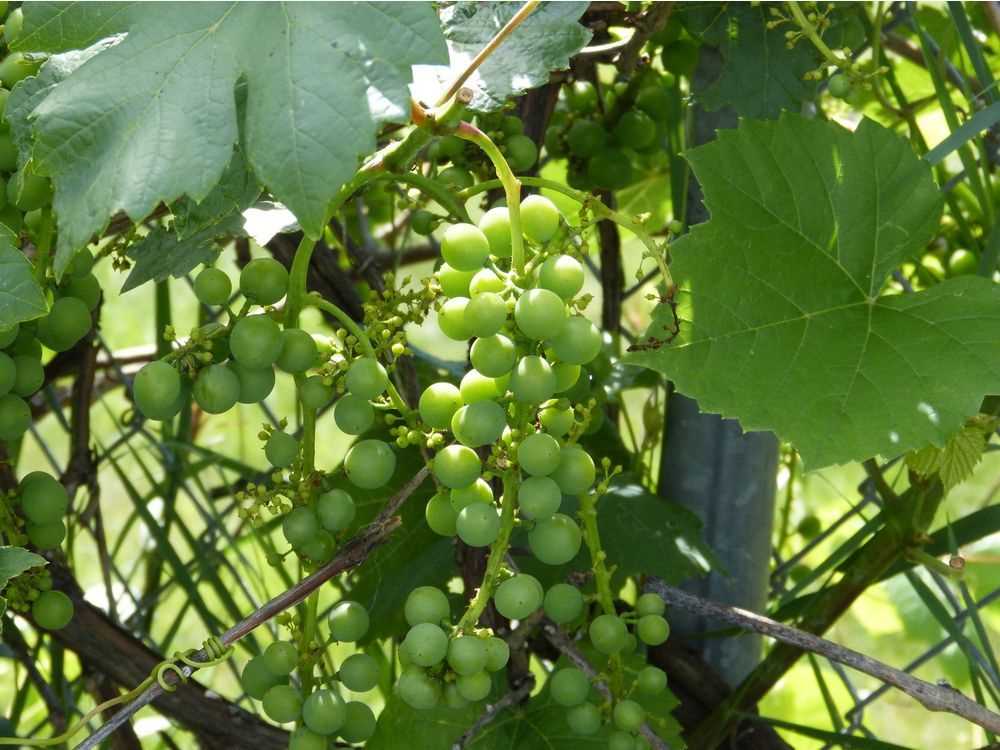
Autumn is the perfect time to focus on the care and maintenance of your grape vines. As the leaves turn vibrant shades of red, orange, and gold, it’s important to ensure your vines are adequately pruned, planted, and cared for. With the right expertise and advice, you can optimize the health and productivity of your grape vineyard.
Pruning plays a crucial role in the life cycle of a grape vine. By carefully removing excess shoots and canes, you can create an open structure that allows for adequate air circulation and sunlight penetration. This helps to prevent diseases and improves grape quality. Expert tips include thinning out excessive shoots and removing any diseased or damaged wood.
When it comes to planting new grape vines, autumn is the ideal season. The soil is still warm from the summer months, which promotes root growth, while the cooler temperatures allow for less stress on the plant. Expert advice recommends selecting healthy, disease-free vines and providing them with a trellis or support system to encourage upward growth.
Caring for your grape vines in the autumn months involves a range of tasks, such as mulching, fertilizing, and protecting from pests. Mulching helps to retain moisture in the soil and regulate temperature fluctuations, while fertilizing provides essential nutrients to support healthy growth. It’s also important to monitor for pests, such as birds and grapevine pests, and take appropriate measures to protect your vines.
With the right knowledge and attention, autumn can be a transformative season for your grape vines. By implementing expert tips and advice, you can ensure the long-term health and productivity of your vineyard, and enjoy a bountiful harvest of delicious, ripe grapes.
Importance of Pruning Grapes in Autumn
Pruning grapevines in autumn is a crucial task for maintaining and managing healthy grape plants. It is an essential part of the overall care and maintenance of grape vines, ensuring their optimal growth and productivity.
There are several important reasons why pruning grapes in autumn is necessary:
- Promotes proper air circulation: Pruning helps to create a well-ventilated canopy for grapevines. It allows air to flow freely through the plant, reducing the risk of fungal diseases such as powdery mildew and botrytis.
- Controls plant size: Pruning is necessary to control the size and shape of grapevines. By removing unnecessary growth, pruning helps to keep grapevines manageable and prevents them from becoming overgrown and tangled.
- Stimulates fruit production: Pruning grapevines in autumn encourages the development of fruiting spurs for the following season. By removing excessive canes and shoots, pruning redirects the plant’s energy towards fruit production, resulting in better quality and higher yields.
- Prevents disease and pests: Pruning plays a crucial role in removing diseased or damaged wood from grapevines. This removes potential sources of infection and helps to prevent the spread of diseases. Pruning also exposes pests and insects, making it easier to detect and control them.
- Improves sunlight exposure: Pruning grapevines allows for better sunlight penetration into the plant’s canopy. This is important for the photosynthesis process, which is essential for the production of sugars and, ultimately, the ripening of grapes.
However, it’s important to note that improper pruning can have negative effects on grapevines. It’s recommended to follow specific pruning techniques suitable for different grape varieties and growing conditions.
Overall, pruning grapes in autumn ensures the well-being and productivity of grapevines. It is an essential practice that should not be overlooked by grape growers.
Best Practices for Pruning Grape Vines
Pruning grape vines is essential for maintaining their health and maximizing fruit production. Here are some best practices to follow when pruning grape vines:
1. Choose the right time:
Pruning should be done during the dormant season, typically in late winter or early spring before the vines start to bud. Pruning during this time allows for better healing of the wounds and reduces the risk of disease.
2. Remove the old wood:
Start by removing any old or dead wood, as well as weak or diseased canes. These canes are often discolored or brittle and can negatively impact the overall health of the grape vine.
3. Maintain a sturdy framework:
Prune the grape vine to maintain a sturdy framework with well-spaced lateral branches. This will allow for better air circulation and sunlight penetration, reducing the risk of disease and promoting optimal fruit production.
4. Follow the Four-Arm Kniffin System:
The Four-Arm Kniffin System is a popular training method for grape vines. It involves selecting four primary canes to train along a trellis or support system. These canes are pruned and trained in a way that maximizes grape production and allows for easy maintenance.
5. Use sharp and clean tools:
Using sharp and clean pruning tools ensures a clean cut and reduces the risk of spreading diseases. Clean the tools between cuts or when moving to another plant to prevent the spread of pathogens.
6. Consider the vine’s age:
The pruning methods for young grape vines differ from those for mature vines. Young vines require more extensive pruning to establish a strong framework, while mature vines need maintenance pruning to remove old wood and promote new growth.
7. Adjust pruning based on variety:
Different grape varieties may have specific requirements for pruning. Some varieties require more pruning to maintain desired fruit quality and size, while others require less to avoid excessive vigor. Research the specific needs of your grape variety before pruning.
8. Have a plan:
Before pruning, have a clear plan in mind for how you want the grape vine to grow and be trained. This will help guide your pruning decisions and ensure consistent and productive growth in the future.
By following these best practices, you can help ensure the health and productivity of your grape vines.
How to Plant Grapes in Autumn: Step-by-Step Guide
Step 1: Choose the Right Variety
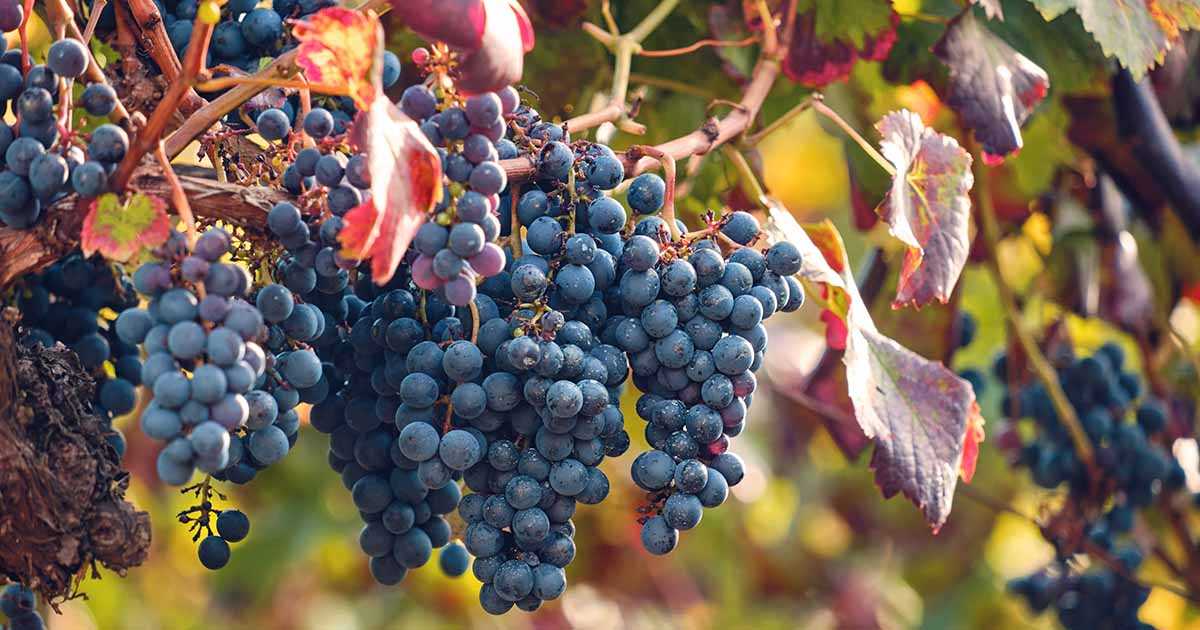

Before planting grapes in autumn, it is important to choose the right variety that suits your climate and soil conditions. Some grape varieties are more resistant to cold weather, while others prefer warmer climates. Consider factors such as average temperatures and rainfall in your area to help you select the most appropriate variety for successful growth.
Step 2: Prepare the Soil
Prepare the soil well in advance to ensure optimal conditions for planting. Start by removing any weeds or grass from the planting area. Use a digging fork or shovel to loosen the soil to a depth of at least 12 inches. Consider adding compost or well-rotted manure to enrich the soil and improve drainage.
Step 3: Planting the Grapes
Dig a hole that is wide and deep enough to accommodate the grape plant’s root system. Place the plant in the hole, ensuring that the crown is level with the soil surface. Gently spread out the roots, and backfill the hole with soil, tamping it down lightly to remove any air pockets. Water the plant thoroughly after planting to settle the soil.
Step 4: Support the Grapes
Grapes need support to grow properly, especially if you are planting a climbing variety. Install a trellis or grape stake system near the planted grape vine to provide support. This will help the vine grow vertically and keep the fruit off the ground, allowing for better air circulation and reducing the risk of disease.
Step 5: Mulch and Water
Apply a layer of organic mulch around the base of the grape vine to help retain moisture and control weed growth. Keep the mulch a few inches away from the plant’s stem to prevent rot. Water the grape vine regularly, especially during dry spells, but be careful not to overwater. Grapes generally require about 1 inch of water per week.
Step 6: Pruning and Training
Pruning is an essential part of grape care, and autumn is the perfect time to prune your newly planted grape vines. Prune back the main stem to just above the lowest bud, and remove any lateral shoots. This will encourage the vine to develop a strong structure and promote fruiting in the following seasons.
Step 7: Pest and Disease Control
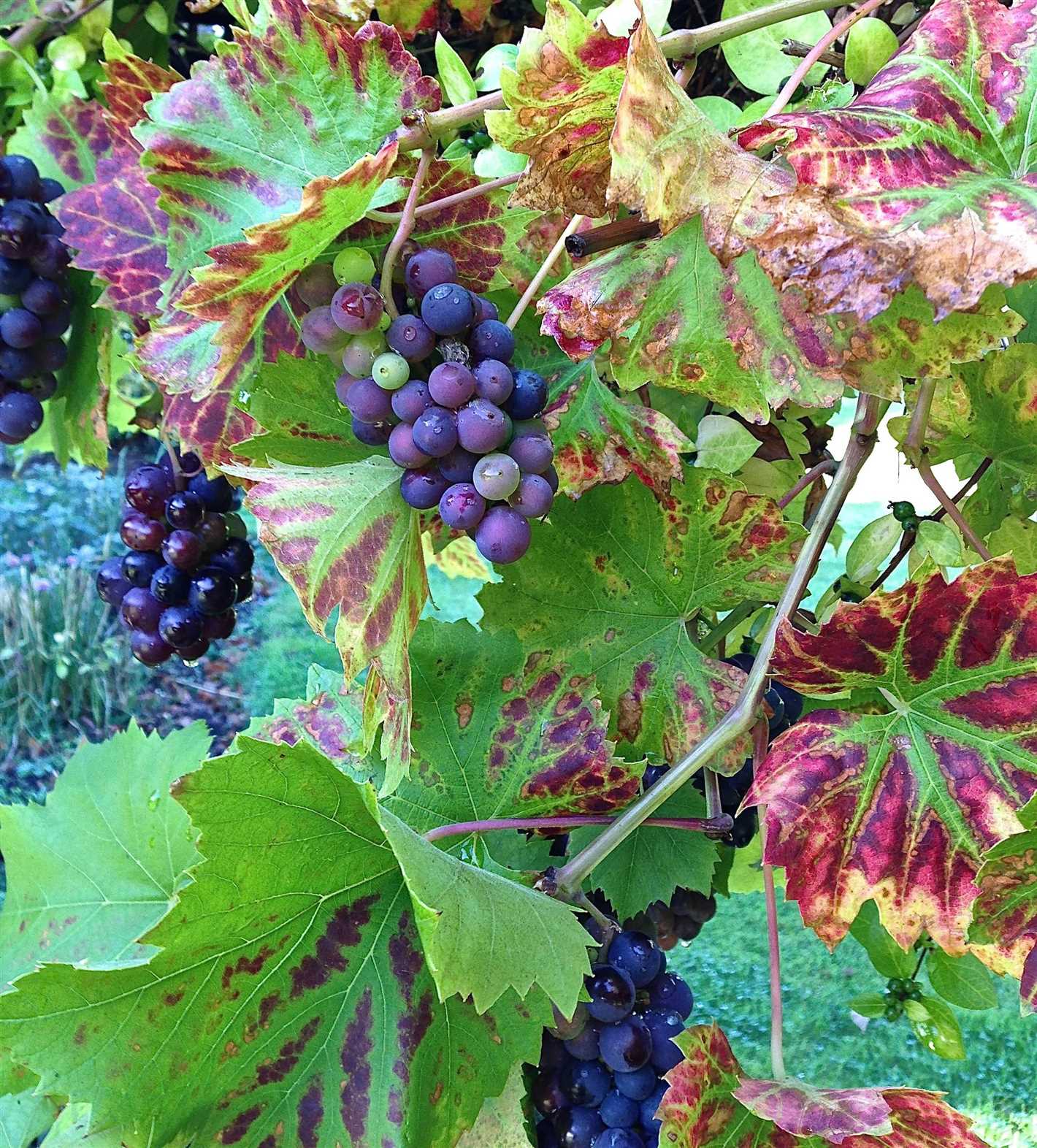

Monitor your grape vines regularly for any signs of pests or diseases. Common pests that affect grapes include aphids, mites, and grape berry moths. Use organic pest control methods or consult a professional if necessary. Proper sanitation practices, such as removing fallen leaves and grape clusters, can help prevent the spread of diseases like powdery mildew and black rot.
By following these step-by-step instructions, you can successfully plant grapes in autumn and enjoy a bountiful harvest in the seasons to come.
Essential Care Tips for Autumn Grape Plantings
Autumn is a crucial time for caring for your grape plants to ensure their health and productivity in the coming seasons. Here are some essential care tips to follow for your autumn grape plantings:
Pruning
- Trim away any dead or damaged branches, as well as any suckers or shoots that are growing in unwanted directions.
- Maintain a balanced grapevine structure by pruning away excess growth and thinning out crowded areas.
- Remove any leaves near the base of the vine to improve airflow and prevent disease.
Fertilizing
- Apply a balanced fertilizer formulated for grapevines to provide essential nutrients to the plants.
- Follow the instructions on the fertilizer package for the appropriate amount and timing of application.
- Make sure to water the plants thoroughly after fertilizing to help the nutrients penetrate the soil.
Mulching
- Apply a layer of mulch around the base of the grape plants to help retain moisture and regulate soil temperature.
- Use organic materials like straw, wood chips, or compost for mulching.
- Avoid piling mulch directly against the trunk of the grapevine to prevent moisture buildup and possible rot.
Weed Control
- Remove any weeds or grass growing around the grape plants, as they can compete for nutrients and water.
- Use hand pulling or hoeing to control weeds, taking care not to damage the grapevine’s roots.
- Consider using a layer of landscape fabric or weed barrier to prevent weed growth around the grape plants.
Pest and Disease Management
| Pest | Prevention and Control |
|---|---|
| Grape Leafhoppers | Monitor for leafhopper presence and treat with insecticidal soap if necessary. |
| Powdery Mildew | Apply preventive fungicides according to label instructions, especially during humid conditions. |
| Birds | Use bird netting or scare devices to protect the grape clusters from bird damage. |
By following these essential care tips for your autumn grape plantings, you can set the stage for healthy growth and bountiful harvests in the seasons to come. Remember to regularly monitor your grape plants and make adjustments to their care as needed.
Harvesting Grapes in Autumn: When and How
Harvesting grapes in the autumn is an exciting time for grape growers. It’s the culmination of months of hard work and care, and the reward is delicious, ripe grapes that can be enjoyed fresh or used to make juice, jelly, or wine. In this article, we will discuss when and how to harvest grapes to ensure the best flavor and quality.
When to Harvest Grapes
The timing of grape harvest in autumn is crucial for achieving the ideal balance of sweetness and acidity. The exact timing will vary depending on the grape variety and the climate of the growing region. However, there are a few general indicators to look for when determining if grapes are ready to be harvested:
- Color: Grapes will change color as they ripen, with red and purple varieties becoming darker and green varieties turning a golden yellow or amber color.
- Sweetness: Taste a few grapes to assess their sweetness. Grapes should taste sufficiently sweet and flavorful, with balanced acidity.
- Tannins: For wine grapes, the tannins should be ripe and not too astringent. The skins of the grapes should feel soft and slightly wrinkled.
- Seed Color: If the seeds inside the grapes have turned from green to brown, it is a good sign that they are mature.
How to Harvest Grapes


Once you’ve determined that your grapes are ready to be harvested, it’s time to begin the process. Follow these steps to ensure a successful grape harvest:
- Gather your harvesting tools: Pruning shears or scissors, a bucket or basket, and gloves to protect your hands.
- Choose a dry day to harvest your grapes. Wet grapes are more prone to rot and can affect the overall quality of your harvest.
- Snip the grape clusters from the vines using your pruning shears or scissors. Be careful not to damage the vines or the neighboring grape clusters.
- Place the harvested grapes gently into your bucket or basket, taking care not to squish or bruise them.
- Continue harvesting until you have collected all the ripe grapes from your vines. You may need to make multiple passes through your vineyard or garden if the grapes ripen at different rates.
- After harvesting, promptly transfer the grapes to a cool, dry location to prevent spoilage.
With these tips and techniques, you’ll be well-equipped to harvest your grapes in autumn and enjoy the fruits of your labor. Whether you plan to eat them fresh or transform them into delicious grape products, harvesting at the right time and handling the grapes with care will ensure the best results.
Common Pests and Diseases of Grapevines: Prevention and Control
Pests
Grapevines can be susceptible to a variety of pests that can negatively impact their health and productivity. Some common pests that can affect grapevines include:
- Grape Phylloxera: These small, yellow insects can damage grapevine roots, causing stunted growth and reduced fruit production. Planting resistant rootstocks can help prevent infestations.
- Leafhoppers: These insects feed on grape leaves, causing them to yellow and die. Regular monitoring and the use of insecticides can help control leafhopper populations.
- Grape Berry Moth: The larvae of this moth feed on grape berries, causing damage and reducing yield. Applying insecticides at the appropriate times during the growing season can help prevent infestations.
- Spider Mites: These tiny mites can cause leaves to become yellow and speckled, ultimately leading to defoliation. Regular inspection and the use of miticides can help control spider mite populations.
Diseases
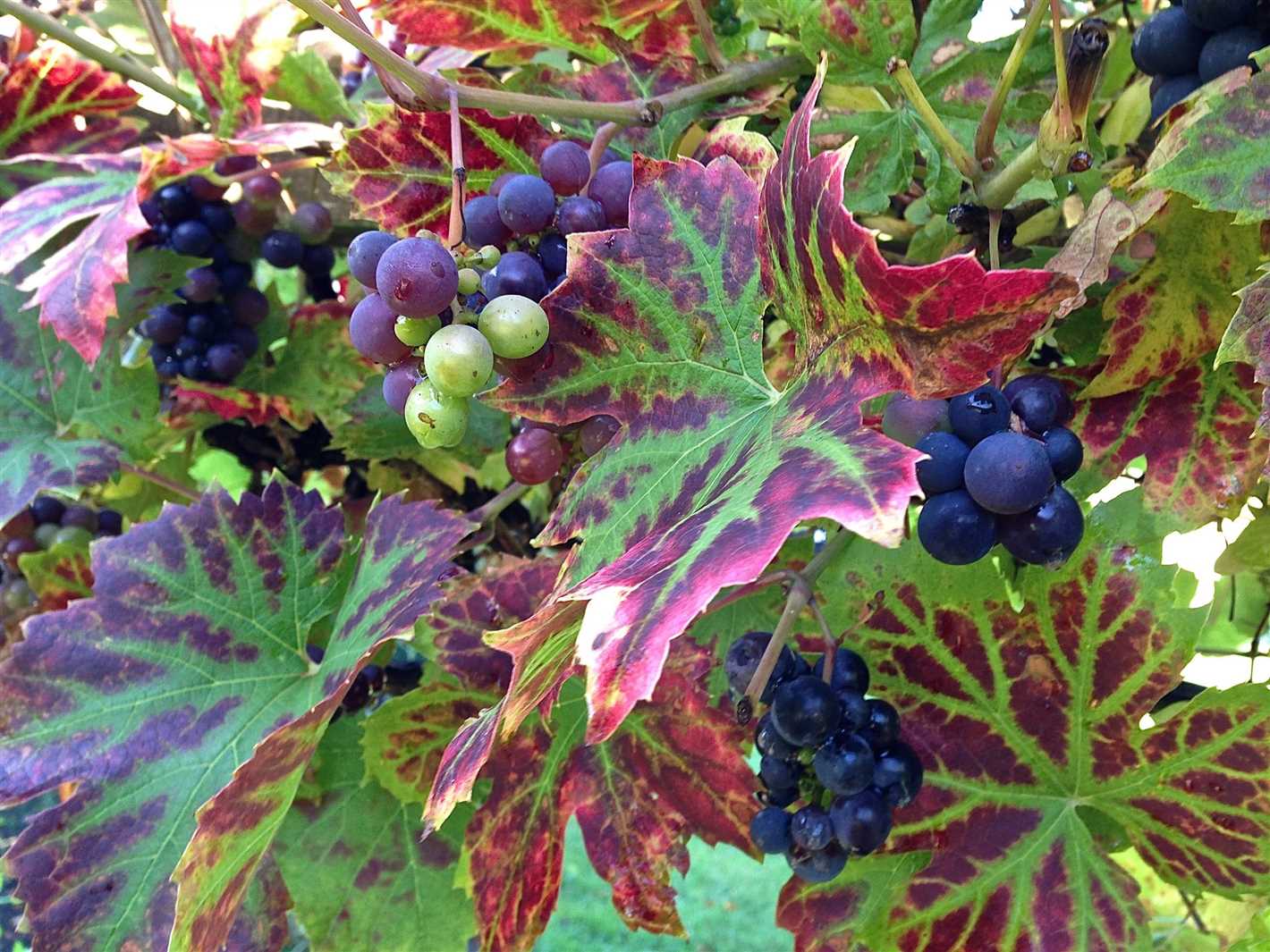

Grapevines are also susceptible to various diseases that can impact their overall health and yield. Some common diseases that can affect grapevines include:
- Powdery Mildew: This fungal disease appears as a powdery white substance on grape leaves, canes, and fruit. Regular applications of fungicides can help prevent and control the spread of powdery mildew.
- Downy Mildew: Another fungal disease, downy mildew causes yellow or brown spots on grape leaves and can lead to defoliation and reduced yield. Managing humidity, using resistant grape varieties, and applying fungicides can help control downy mildew.
- Black Rot: This fungal disease causes circular black lesions on grape berries, leaves, and shoots, leading to fruit drop and reduced yield. Regular pruning, removal of infected plant material, and the use of fungicides can help prevent and control black rot.
- Bunch Rot: Bunch rot is a fungal disease that causes grapes to become mushy and grey when infected. Ensuring proper airflow around grape clusters, reducing excess moisture, and removing infected bunches can help control the spread of bunch rot.
Prevention and Control
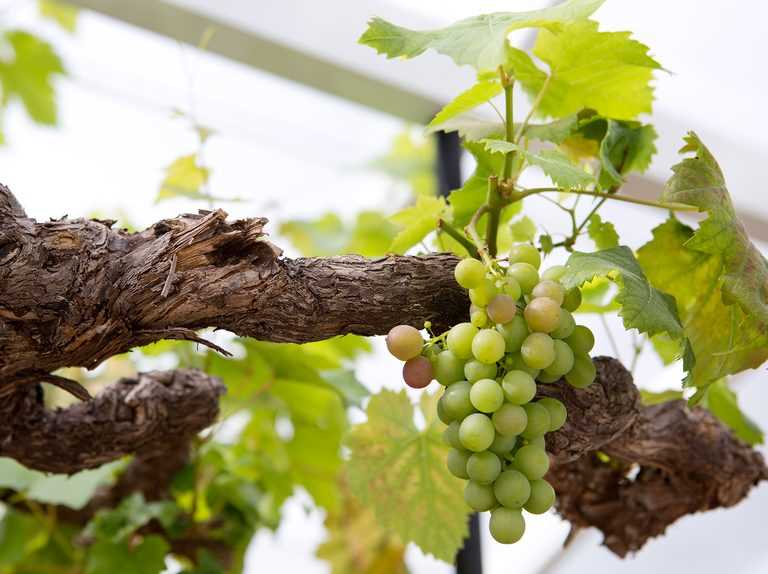

Preventing and controlling pests and diseases in grapevines requires a combination of cultural practices, regular monitoring, and the use of appropriate treatments. Here are some tips for preventing and controlling common pests and diseases:
- Plant Disease-Resistant Varieties: Choosing grape varieties that are resistant to common pests and diseases can help reduce the risk of infestations and infections.
- Maintain Good Plant Hygiene: Removing and disposing of infected plant material, such as fallen leaves and diseased berries, can help prevent the spread of pests and diseases.
- Monitor Regularly: Regularly inspect grapevines for signs of pests and diseases, such as discolored leaves, damaged fruit, or unusual growth patterns. Early detection allows for timely treatment.
- Practice Integrated Pest Management: Using a combination of cultural, biological, and chemical control methods can help manage pest and disease populations effectively while minimizing the impact on the environment.
- Apply appropriate treatments: When necessary, apply insecticides, fungicides, or other treatments following the manufacturer’s instructions and recommended timing to control pests and diseases effectively.
- Follow Proper Cultural Practices: Providing adequate water, nutrition, and proper pruning techniques can help maintain the overall health and vigor of grapevines, making them less susceptible to pests and diseases.
By implementing these prevention and control measures, grape growers can ensure the health and productivity of their vineyards and enjoy a bountiful harvest of delicious grapes.
Expert Advice for Protecting Grapevines in Autumn


As autumn sets in, it is important to take the necessary steps to protect your grapevines from the harsh conditions that this season brings. By providing proper care and protection, you can help ensure the health and vitality of your grapevines as they prepare for dormancy. Here are some expert tips to keep in mind:
1. Pruning
Pruning is a crucial step in preparing your grapevines for winter. Remove any dead, damaged, or diseased wood, as well as any excessive growth. This will not only help prevent the spread of diseases and pests, but it will also promote the growth of new canes in the next growing season. Prune your grapevines in late autumn, once the leaves have fallen off.
2. Mulching
Applying a thick layer of organic mulch around the base of your grapevines can help protect the roots from freezing temperatures. Mulch also helps retain moisture in the soil and prevents weed growth. Use materials such as straw, wood chips, or leaves and apply the mulch layer to a depth of about 3-4 inches.
3. Covering
If you live in an area with severe winter weather conditions, it may be necessary to cover your grapevines for added protection. Use burlap or frost blankets to cover the vines, making sure to secure the fabric tightly to prevent it from coming loose. This will help shield the vines from cold winds and freezing temperatures.
4. Watering
Proper watering is important throughout the year, including the autumn season. Make sure to water your grapevines deeply before the first frost, as this will help them store the necessary moisture for the winter. Avoid overwatering, as this can lead to root rot.
5. Pest and Disease Prevention
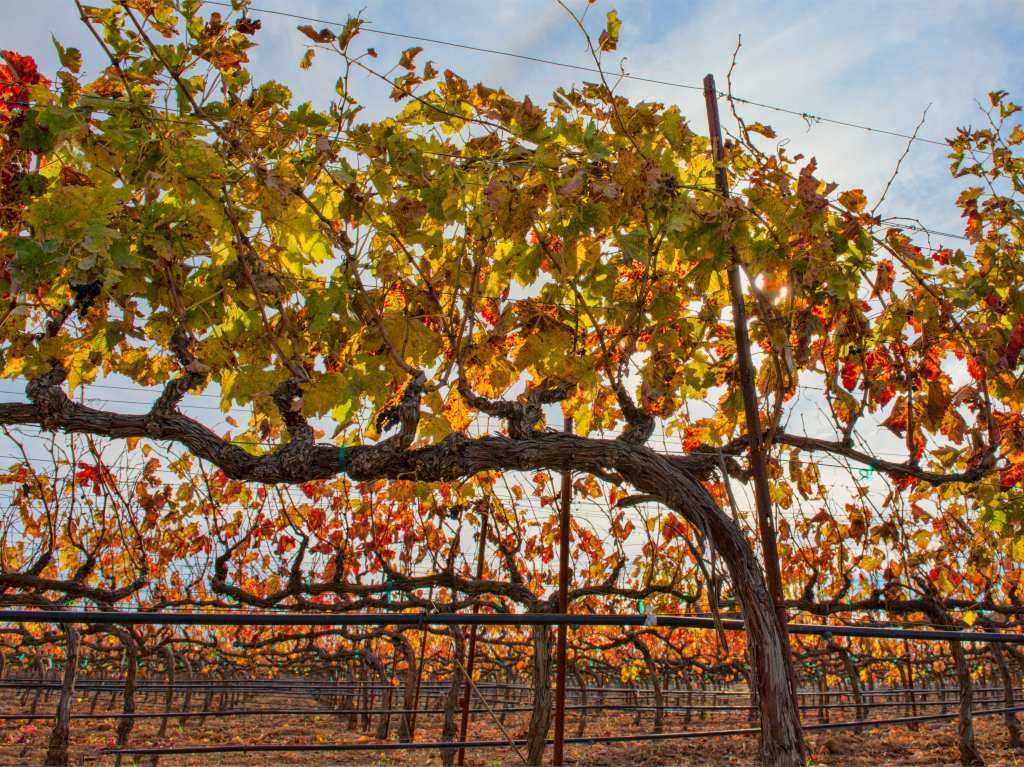

Autumn is a critical time to protect your grapevines from pests and diseases that can overwinter and cause damage in the next growing season. Inspect your grapevines regularly for signs of pests or diseases, and take appropriate measures to prevent or treat them. This may include spraying organic insecticides or using natural remedies.
6. Training and Trellising
Ensure that your grapevines are properly trained and secured to a sturdy trellis or support system. This will help prevent damage from strong winds or heavy snowfall. Check the trellising system regularly to ensure it is in good condition and make any necessary repairs before winter.
7. Winterizing Young Grapevines
If you have recently planted young grapevines, they may require extra protection during their first winter. Consider wrapping the vines in burlap or using a frost blanket to shield them from cold temperatures and wind.
By following these expert tips for protecting your grapevines in autumn, you can ensure their health and increase their chances of thriving in the next growing season. Remember that each grapevine variety may have specific care requirements, so it’s important to consult with a local expert or nursery for personalized advice.
Autumn Maintenance and Winter Preparation for Grape Vines
As autumn arrives, it’s important to ensure that your grape vines are properly maintained and prepared for the upcoming winter. Taking the time to perform a few key tasks can help protect your vines and ensure they thrive in the coming seasons.
Pruning and Trimming
- One critical task to undertake in autumn is pruning your grape vines. This helps remove any dead or damaged branches, promotes adequate air circulation, and helps control disease.
- Begin by inspecting the vines for any signs of disease or infestation. Remove any affected branches or leaves, cutting them back to healthy wood.
- Next, trim away any excess growth to maintain a manageable size and shape for the vines. Remove any long, trailing branches and thin out overcrowded areas.
- Remember to sanitize your pruning tools between cuts to prevent the spread of disease.
Weed Control
Autumn is also a good time to address weed control around your grape vines. Weeds can compete with the vines for nutrients and moisture, so it’s important to keep them under control.
- Start by removing any existing weeds from the vineyard area, pulling them out by the roots.
- Consider applying a layer of mulch around the base of the vines to help suppress weed growth and retain moisture.
Fertilization
Applying fertilizer in autumn can contribute to the long-term health and productivity of your grape vines.
- Use a balanced, slow-release fertilizer formulated specifically for grapes. Follow the manufacturer’s instructions for application rates.
- Spread the fertilizer evenly around the base of each vine, taking care not to allow it to come into direct contact with the trunk.
- Water the vines thoroughly after applying the fertilizer to help it penetrate the soil.
Protecting from Frost
Grape vines are susceptible to frost damage during the winter months, so it’s important to take steps to protect them.
- Consider installing a frost cover or wrapping the vines with burlap to shield them from freezing temperatures.
- Prune your vines in a way that encourages air circulation, as still, moist air can increase the likelihood of frost damage.
- If your grape vines are growing on a trellis or support structure, ensure it is sturdy and can withstand any heavy snowfall or strong winds.
Monitoring and Maintenance
Throughout the winter months, continue to monitor your grape vines for any signs of disease or damage. Remove any fallen leaves or debris from around the base of the vines to prevent fungal growth.
During periods of extreme cold, consider providing additional insulation by adding a layer of mulch around the base of each vine.
By taking the necessary steps to maintain and prepare your grape vines in autumn, you can help ensure their health and vitality throughout the winter, setting them up for a successful growing season next year.
Question-answer:
When is the best time to prune grapevines in autumn?
The best time to prune grapevines in autumn is after the leaves have fallen off the vine. This is typically in late autumn or early winter.
How do I prune grapevines in autumn?
To prune grapevines in autumn, start by removing any dead or damaged wood. Then, prune back the remaining branches to about four to six buds. This will encourage new growth in the spring.
Can I plant grapevines in the autumn?
Yes, you can plant grapevines in the autumn. In fact, many experts recommend planting grapevines in the autumn because the cooler weather allows the roots to establish themselves before the hot summer months.
What care do grapevines need in autumn?
In autumn, grapevines need to be pruned to remove dead or damaged wood and to shape the plant. It’s also important to keep the area around the grapevines clear of leaves and debris to prevent the spread of disease. Additionally, grapevines should be watered regularly, especially during dry periods.
Do grapevines need protection in autumn?
Grapevines may need some protection in autumn, especially if the area experiences frost or freezing temperatures. This can be done by covering the vines with a frost blanket or by applying a layer of mulch around the base of the plants to insulate the roots.







